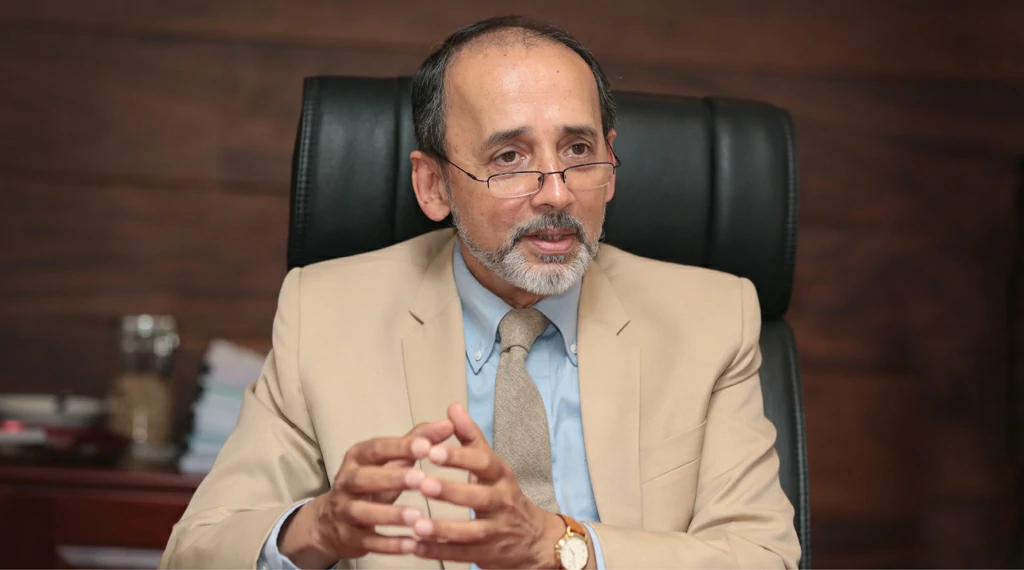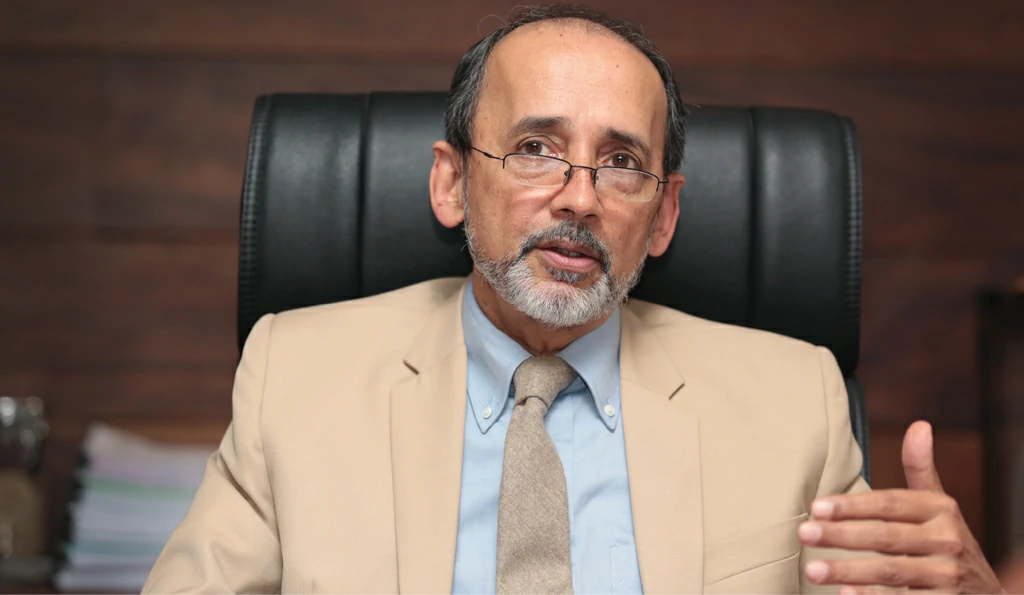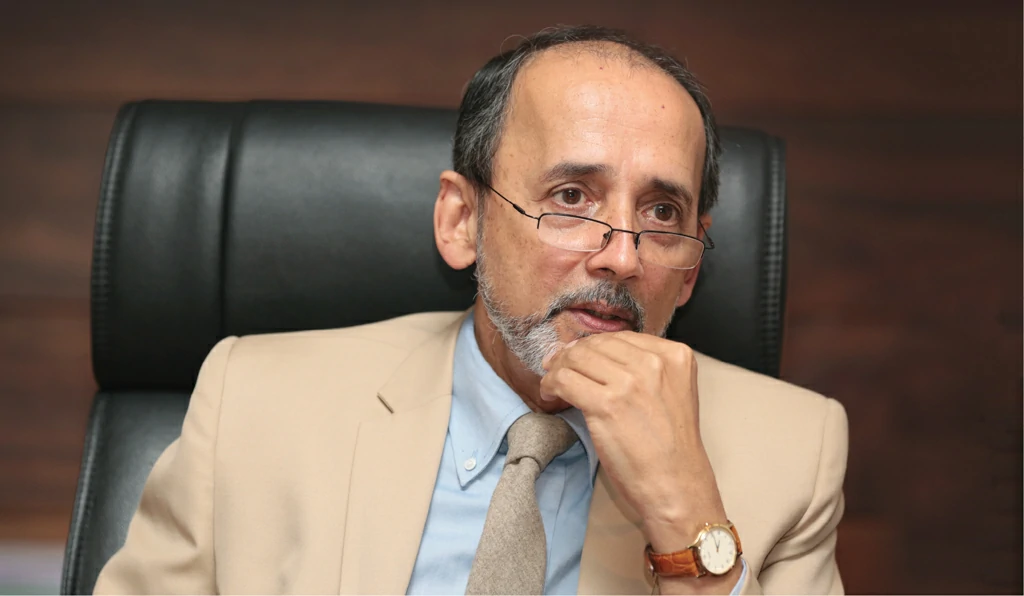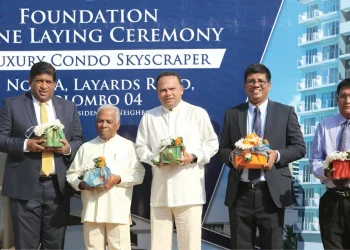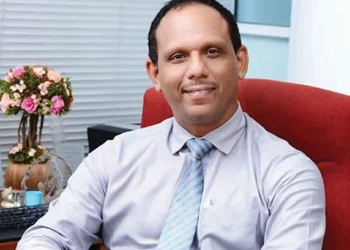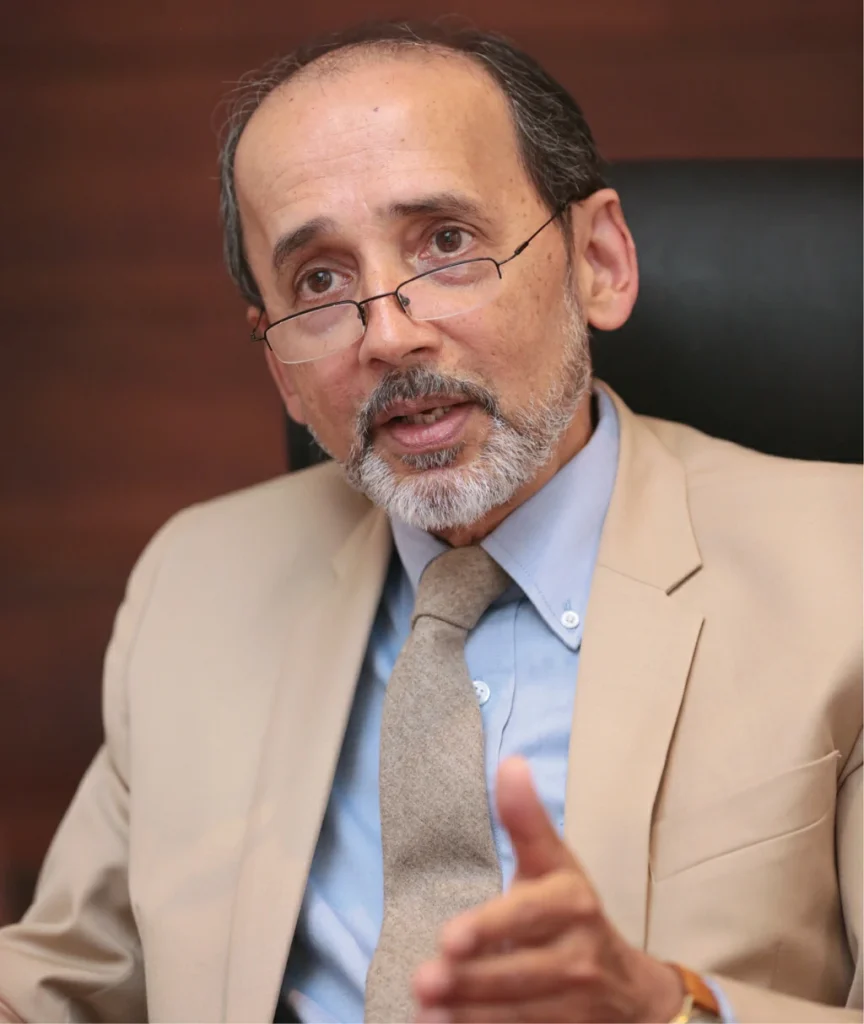
The tea industry of Sri Lanka celebrates its milestone 150th Year in 2017, an era in which the Ceylon Tea brand must cater to new needs and face the challenges of the 21st Century. Rohan Pethiyagoda, Chairman of the Sri Lanka Tea Board, speaks about how the brand is transforming itself to appeal to premium markets and about the Board’s responsibility to enrich the lives of those involved in every stratum of Sri Lanka’s flagship industry.
By Keshini de Silva | Photographs Menaka Aravinda
What sets Ceylon Tea apart from the rest?
The primary feature of Ceylon Tea is that it is almost entirely orthodox-manufactured tea, whereas India and Kenya, our two largest competitors, produce mainly CTC teas. CTCs (Crush, Tear, Curl) are more suited for tea bags, whereas orthodox teas can be leafier and lend themselves to a greater variety of made teas. Most importantly, however, Sri Lanka positions itself as a producer of premium teas, which you cannot do if you target only production for tea bags. At the same time, we have to also cater to the consumer demand for the convenience of tea bags, so we do manufacture good teas that go into tea bags as well.
At the juncture of 150 Years, what are your thoughts on the Ceylon Tea industry?
Sri Lanka is making the transition from a Less Developed Country to a Middle Income Country. This shift has resulted in several challenges. One is that Sri Lankans now have higher wage expectations than workers in other tea producing countries such as Vietnam, Kenya and neighbouring India. Our per capita Gross Domestic Product, according to the IMF, is almost four times that of Kenya and double that of India. The cost of living is higher in Sri Lanka and our workers earn way more than their Indian and Kenyan counterparts, which in turn makes our cost of production very much higher. Our challenge then, is to increase productivity and quality, and add more value to our tea, so as to offset the higher cost of production resulting from higher wages.
Sri Lankans Now Have Higher Wage Expectations Than Workers In Other Tea Producing Countries Such As Vietnam, Kenya And Neighbouring India. Our Per Capita Gross Domestic Product, According To The IMF, Is Almost Four Times That Of Kenya And Double That Of India.
As we enter our 150th year, this is the biggest challenge we face. If we fail now, we can wave good bye to the tea industry.
What significance does the Ceylon Tea brand hold and how can the industry further leverage on this brand value?
Most of our advertising as a national brand goes into two areas of focus. One is the ‘Lion Logo’ reserved exclusively for teas wholly manufactured and retail-packed in Sri Lanka. It is a trademark registered across the world. The other area is the ‘Ceylon Tea’ brand, which has become more diluted since the country changed its English name to Sri Lanka some 40 years ago. This bit of gratuitous nationalism was a PR disaster for the industry: Ceylon is no longer a geographical name. Most countries are happy to have one name by which they are known to the world, such as Germany, India and Japan, and another in their local language, such as Deutschland, Bharat and Nippon. ‘Ceylon’ as a brand is very important to us.
I hope the new constitution that is now being drafted will recognise Ceylon at least as a foreign-language name for Sri Lanka. This will help our case. At the moment ‘Ceylon’ is no more than a historical name, rather like Taprobane and Serendip: little more than an arbitrary combination of letters not linked to a political entity; and as it is already widely used by people in many contexts, we cannot even claim it as a trademark. However, it is important to many products in addition to tea, such as Ceylon cinnamon and gemstones.
There is clearly a unique demand for Ceylon Tea. What must be done or is being planned to ensure the brand stays competitive in the international market?
To stay competitive, you have to offer a product with characteristics that set it apart from competing origins. We also have to look at the needs of our consumer markets. Western markets tend to want clean teas with minimal impurities as well as pesticides; they are also interested in the ethics of tea, such as fair wages and also the non-use of child labour. Perhaps most importantly, they want to know that the tea is of premium quality in terms of flavour, fragrance and colour. The fact that Sri Lanka is the only country in the world that produces black tea that ticks all these boxes and is also 100 per cent ozone friendly is hugely significant. Then, there is the fact that pretty much all our tea is hand-plucked. Our job now is to bundle all these attributes – the physical, ethical, the environmental – into a ‘Ceylon Tea’ brand that appeals to our key markets.
In our strongest markets, such as Russia, Iraq, Syria, Turkey and Iran, many of these attributes are arguably less important. Their needs are different and centre largely around the premium reputation of Ceylon Tea. Then there are the other important markets for Ceylon Tea, such as the United States, China, Japan and Germany. Their demand is highly sophisticated and marketing tea to them is a formidable challenge, though the potentially huge rewards mean we have to try.
What is being done to capitalize on these emerging markets for Ceylon tea? What more can exporters do to tap into new markets?
We have been engaged in many activities in these markets. We have an office in Beijing, for example, to promote Ceylon Tea in the Chinese market. This is paying significant dividends and we see the Chinese market for Ceylon Tea, though still modest, doubling every three or four years. China also purchases the more expensive teas and that too, is quite valuable to us. At the end of the day, the Chinese are the world’s oldest tea-drinking and tea-making nation. Tea for them is like wine to the French and Italians; the Chinese really appreciate good tea. Shopkeepers at BIA say Chinese tourists buy mainly the most expensive teas. There are now many dedicated Ceylon Tea shops in China and even Japan that are recording steadily growing sales. These are usually premium teas that are elegantly packaged: both the Chinese and the Japanese pay close attention to packaging as well as product. Ceylon Tea has also found exclusive markets in global hotel chains such as Radisson, premium airlines such as Emirates and Qatar, and thousands of leading retail outlets in the United States, such as the Tea Leaf & Coffee Bean chain.
If We Are Looking To Enter Sophisticated New Markets That Will Purchase The Higher-End Ceylon Teas, We Have To Also Think About How We Approach Them. The Richer A Market Is, The More Difficult It Is For Us To Get A Foot In.
That said, we need to look into the type of promotional activity that must be carried out in each export market. In the US, for example, the name ‘Ceylon’ is almost unknown. Our market research indicates that we have to build a relationship between Ceylon and Sri Lanka in the minds of the consumers in such non-traditional markets.
If we are looking to enter sophisticated new markets that will purchase the higher-end Ceylon Teas, we have to also think about how we approach them. The richer a market is, the more difficult it is for us to get a foot in. We also have to pay attention to lost markets such as Egypt, Pakistan and the UK. While the former two have experienced economic stress, losing the UK was at least in part an own-goal. England used to be our best market until the 1970s, but we now export very little to Britain despite the fact that they drink a huge amount of tea. In part, the reason for this change
has been the tea bag. But with nationalisation and the eviction of British tea planters from Sri Lanka in the 1970s, their focus shifted to Kenya. The British taste is now largely for strong, black Kenyan and Indian teas sold in tea bags. They just want a quick cuppa with lots of colour, drunk with milk. That’s a million miles from, for example, the fragrant, golden teas that characterise the Nuwara Eliya and Dimbula regions. These do not appeal to the broad mass of British tea drinkers nowadays, I suspect, partly because most of England has a problem with the water, which has a high concentration of calcium because the country rests on a slab of limestone. As a result, it is almost impossible to make a good cup of expensive Ceylon Tea in England using tap water.
What are your thoughts on increasing the local consumption of Ceylon Tea?
This is in fact a two-pronged problem: firstly the appreciation and consumption of tea by the Sri Lankan population, and then the opportunity we have to make every one of the two million foreigners who visit Sri Lanka annually an ambassador for Ceylon Tea.
But first we need to create a high degree of tea appreciation among Sri Lankans. If we ourselves do not appreciate tea, how can we expect others to do so? In my opinion most of us do not appreciate tea because there are a few social issues that handicap us. For one thing, only a few Sri Lankans, especially amongst the middle class, make their own cup of tea. Instead, it is usually made for them. However, if you are going to appreciate something, you have to take an interest in it. When have you heard a Sri Lankan, when handed a cup of tea, ask about the region that the brew originates from? Or whether it is a pekoe or a fannings? But if you serve the same person a glass of wine, there is a good chance they would want to know which country and region it comes from, what grape and which year among other questions. Therefore, we have much to do in getting Sri Lankans to take an interest in appreciating this wonderful beverage.
We Need To Create A High Degree Of Tea Appreciation Among Sri Lankans. If We Ourselves Do Not Appreciate Tea, How Can We Expect Others To Do So?
The second issue is that it is really difficult to find a good cup of tea in Sri Lanka. For one thing we often add powdered milk, which is already sweetened and sometimes even flavoured with vanilla. And then there is the sugar. While on average Sri Lankans consume 1.4 kilograms of tea every year, on average we each consume 30 kilograms of sugar per year. In other words, we consume 20 times as much sugar as tea! Our challenge then, is to persuade Sri Lankans to better appreciate tea, and to stop treating tea merely as a colourant for their sugar. A good cup of Ceylon Tea is best drunk neat, so you can appreciate its flavours, just as you would with any fine beverage. Once we ourselves show a little appreciation for our tea, the world will catch on.
When we dine at a Chinese restaurant, for example, many of us drink Chinese tea with no milk or sugar. Yet, at a Sri Lankan restaurant we almost never drink the tea. In following the Japanese tea model, local appreciation is key; the Japanese are quite crazy about their tea. Sri Lankans too must care about this beverage and take some pride in it. To obtain a tea education I recommend that everyone visits the Hantana Tea Museum, where they can learn the different grades and regions of Ceylon Tea, or one of the many tea shops now operated in Colombo and elsewhere by leading exporters.
Sri Lanka’s tea production has been declining over the past three years. What has been planned to address this?
I personally am not overly concerned about declining production. In the last year it declined by about 11 per cent as a result of the drought, the banning of weedicides and an ineffective fertiliser policy. However, prices at the tea auction last December were some 30 per cent up on the prices seen in December 2015. Our challenge is to produce great tea that fetches great prices, not just volume. Remember Japan has a tea industry that is far more valuable than Sri Lanka’s. Yet Japan only produces one third as much tea as we do. My job is to make Sri Lanka’s tea stakeholders, whether factory and plantation owners, workers, factory officer or exporters, richer. Whether we achieve that by producing a lot of tea or a little tea is less important. Our job is to enrich our people. If we can transition to the Japanese model, where a small number of tea-plantation owners produce a small quantity of great tea for which there is a high global demand, that’s a place I’d be happy to live in.
My Job Is To Make Sri Lanka’s Tea Stakeholders…, Richer. Whether We Achieve That By Producing A Lot Of Tea Or A Little Tea Is Less Important. Our Job Is To Enrich Our People.
We need to remember that our economy is growing fast. In the future, many Sri Lankans will not want to work in agriculture. They will prefer the manufacturing or service sectors. If you ask any young person in tea planting areas, “Would you rather pluck tea or drive a taxi?”, of course they want to drive the taxi. We must also recognise that labour will be a challenge for the industry. When it is difficult to attract labour, higher wages must be paid. This in turn increases the cost of production. Therefore, in addition to improving productivity, you need to find markets that will pay higher prices for your product. So, if we just say we want to produce more tea, that is a false economy. Our task is to produce more value and retain bigger margins.
Unfortunately, this is quite difficult to transmit to the Government, which continually demands growth in production. Although there is an undue emphasis on short-term objectives, there is no instant gratification to be had. Thus, from a strategic perspective, we are focusing on improving quality and investing in promotional campaigns to get the concept of ‘Ceylon Tea’ into the consciousness of the world market. We are not just looking at exporting more tea. Our game is to create value, not just volume.
Producers, especially small holders have emphasised the need for replanting. What are your thoughts on this?
A tea bush starts ageing after about 35-40 years. We are now replanting not much more than 0.3 per cent of our acreage annually. In other words, replanting all of Sri Lanka’s tea at the present rate will take approximately three centuries. It is simply not going to happen, and Government will not fund it. Why should the Government fund it? After all, this is a private industry. The plantation companies have replanted quite a lot, but now that their leases are drawing to a close, why would they invest millions in replanting when they have their lands on lease from the government? Land title and ownership is a key attribute of successful economies, but in Sri Lanka the very idea of selling government land is toxic to both the Government and people. This is a recipe for failure and we must rethink this archaic policy.
Tea is a business that must operate on business principles, not handouts. Besides, we arguably have more pressing problems than replanting. For example, climate change is a massive issue. Yet, it is almost impossible to engage politicians in a discussion on climate change. For them it is something in the distant future, beyond the election cycle. But climate change is happening now: Nuwara Eliya District, for instance, now receives 40 per cent less rainfall now than it did 100 years ago. With an annual rainfall under 2,000 milimetres, Nuwara Eliya is now technically in the dry zone. We are now experiencing an extremely long dry period between November and April, and also seeing fewer rainy days per year. This is a huge threat to agriculture in general and tea in particular.
You Need To Find Markets That Will Pay Higher Prices For Your Product. So, If We Just Say We Want To Produce More Tea, That Is A False Economy. Our Task Is To Produce More Value And Retain Bigger Margins.
The solutions we hope to explore through the Tea Research Institute as a response to these challenges include drip irrigating smaller plots of tea or developing clones of tea that are drought resistant. This demands technology and research, and will take time. But the fact is that climate change is here now and we have to face up to it.
What is being done to ensure the tea industry is sustainable?
Most of the industry has conformed to sound ethical and environmental standards. We follow some of the best agricultural practices in the world. A small part of the industry, however, is lagging behind. If we aspire to the Japanese model of becoming a premium tea producer, you have to allow the weaker factories that are not manufacturing good-quality tea to fail. Sri Lanka has a smaller tea acreage than Kenya, but while Kenya has about 110 factories we have more than 700. Factories that cannot produce quality tea should be allowed to go down the chute. This is not a failure: a healthy economy needs creative destruction. These factories would need to look at doing something else.
What is being done to create awareness on employment opportunities in the tea industry and to attract labour?
We have planned open educational fairs for young people in the 12 tea-growing districts on one weekend of every month this year, as part of the celebration of the 150th Year of Ceylon Tea. Here we conduct tea education, tea awareness and tea appreciation activities to get young people into the buzz of tea. Whether they become a tea plucker, tea planter or tea entrepreneur does not matter, just so long as they get involved in the tea economy. There are currently at least one million Sri Lankans directly employed in the country’s tea industry and a further million indirectly involved, so tea is not just a significant employer, but the largest employer.
What are your thoughts on the much discussed Blending Hub?
I believe I genuinely see both sides of this argument.
About 40 per cent of Sri Lanka’s tea is exported as a value-added product, and it is these exporters who are the mainstay of the Colombo Tea Auction. As I mentioned already, the prices at the auction as of December 2016 have been approximately 30 percent up on the previous year. But very few businesses can build a 30 per cent variation in raw-material prices into their business plan. The prices of retail goods in supermarkets, for example, cannot arbitrarily be changed as raw-material prices fluctuate. These are often negotiated months in advance. Therefore, when the price of raw materials increases the exporter has to either increase the price or, if they are bound by a contract, absorb the loss. In such instances, naturally, the exporter would like to import a cheaper tea from Kenya or India, mix it with his premium Ceylon Tea to create an identical blend, and export it. Certain exporters request the blending hub largely to cushion themselves from the vagaries of the Colombo auction. But you can see that if cheap teas were imported for blending at a time like this, the auction will collapse.
The stakeholders who are against the blending hub are the ones who maintain that Ceylon Tea is a unique premium brand that should not be diluted. They worry that the moment consumer markets hear that Ceylon Tea is mixed with tea from Kenya or Vietnam, the Ceylon Tea brand will lose its reputation and competitive edge. In addition, there is the risk of international companies setting up in Sri Lanka, buying a little Ceylon Tea while importing the rest, and then exporting the packaged tea as of Sri Lankan origin. Thereby the consumer is misled and the value of the Ceylon Tea brand eroded.
While I see both sides of this debate, this is not a call I want to make. Whether we should go in the direction of a hub or continue to adhere to our current conservative business plan has to be a political judgment.
Whether We Should Go In The Direction Of A Hub Or Continue To Adhere To Our Current Conservative Business Plan Has To Be A Political Judgment… The Question Is, How Valuable Is The Ceylon Tea Brand?
That said, if you look at a premium market like French wine, France would never allow grape juice to be imported and blended in its territory. However, a country without such a reputation to defend has the ability to profit from importing and blending wine.
The question is, how valuable is the Ceylon Tea brand?
There are several events planned to celebrate the 150th Year Anniversary of Ceylon Tea. Could you tell us about these?
When the 150th anniversary came up, as Ceylon Tea largely targets the world market, we decided to use this milestone to strengthen global brand awareness. Therefore, the main event we have planned is the Tea Convention at the BMICH on August 9-10, which will be a global conference where we expect about 500 tea specialists from across the globe to attend. On the afternoon of the Convention, President Maithripala Sirisena will host a garden party at President’s House for the delegates. Other events include a global tea party on July 6, which will be held at all Sri Lankan missions overseas; probably the biggest tea party held in the world in one day. The UN Food and Agriculture Organisation’s intergovernmental tea group will meet in Colombo on August 7-8, with other trade and professional meetings.
Following that will be the Tea Festival on August 12-13. In addition to a street carnival there will be a celebration of Ceylon Tea with tea appreciation events and gourmet tea-themed cuisine. We hope that the Tea Festival too will become an annual event and attract an international audience, similar to the Galle Literary Festival.
Then there is the Tea Expo, which will be held together with the rubber and coconut industries. For the plantations sector itself, we will be having the regional fairs. We also hope to host 40-50 media personnel from across the world to cover the events and all aspects of the industry, such as the tea auction.
In short, we are focused on using 2017 as a year of branding Ceylon Tea as a ‘cool’ beverage.
What is your outlook on the future of Ceylon Tea? What are the plans for the future?
In an ideal world every tea factory in Sri Lanka would be manufacturing, packaging, branding and marketing their tea and taking it to shop shelves across the world. However, only a few factories in Sri Lanka possess the financial and intellectual capital to do that. At the moment most factories sell their produce at the Colombo Tea Auction to companies that export either value-added products or bulk tea. I believe the transformation of manufacturers into direct exporters will be pivotal to the future success of the industry. In the long term, I see the Sri Lankan tea industry shrinking to a keener, meaner, more focused sector that produces maybe 100 million kilograms of premium quality tea per annum, for which we will receive a premium price.
This Is A Demanding Industry And Expectations Are High. But I Tend To Be A Good Listener, So I Listen To The Stakeholders And Try To Work To Their Agenda And For Their Benefit. I Have Made It Very Clear That I See Myself As A Servant Of The Tea Industry, Not Of The Government.
Another key focus is enabling high quality entrepreneurs access to the tea industry. Many of the current leaders of the tea industry have had advantages ordinary people do not have. They have overseas contacts, foreign-language skills, high levels of education, inherited wealth and access to capital. This is a combination that is very difficult to replicate. I hope we will find a way of improving tea education so that there will be the skills set the tea industry of the future demands. The Wayamba University, for example, is running a programme for tea professionals. They train them in growing tea, managing an estate or factory, managing finances and operating a tea enterprise. But at the end of the day, it is only through diversity and competition that the best will emerge.
Could you tell us about yourself and your role at the Sri Lanka Tea Board?
The Sri Lanka Tea Board plays two roles. On the one hand it is the regulatory arm of the industry, where our job is to make sure the estates, factories, tea brokers and exporters play by the rules and that we do not export substandard tea. Essentially, we are the law-enforcement agency for the industry. The other arm is promotion, where our job is to take the message of Ceylon Tea to the world.
My professional background is not related to tea, although I come from a tea family. Both my father and maternal grandfather were tea planters. I myself used to own a small plantation, but I was never involved in the manufacture of tea. In fact, I am now a little ashamed to admit that I uprooted the tea on my estate and converted it back to forest. I am a biomedical engineer by profession and began my career at the Ministry of Health. But I guess I am now generally considered a biologist. I have a fellowship at the Australian Museum Sydney and also serve on numerous international committees such as the High Level Group that oversees the United Nation Environmental Programme’s Global Environmental Outlook process.
I thought long and hard before taking on this job and fret that I do not do it well enough. This is a demanding industry and expectations are high. But I tend to be a good listener, so I listen to the stakeholders and try to work to their agenda and for their benefit. I have made it very clear that I see myself as a servant of the tea industry, not of the Government. If the industry and the Government ever come into conflict, I suspect I will find myself on the side of the industry. I think it is true to say not a day goes by where I am not consulting with some part of the industry and feel very much a part of it now. For better or for worse, tea is in my blood.
